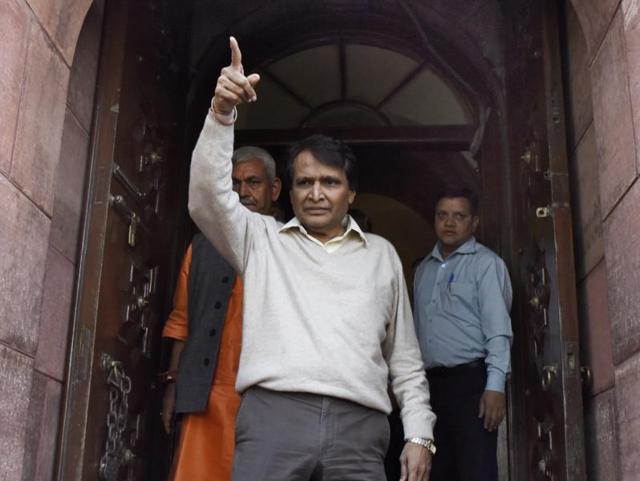The destination for Indian Railways is within sight
The railway minister has chosen the correct path to improve the organisation’s finances, which are under stress at the moment
In A Tale of Two Cities, Charles Dickens, the eminent novelist of the 19th century, wrote: “ ... It was the best of times, it was the worst of times, ... it was the spring of hope, it was the winter of despair…”. The story of the Indian Railways is slowly developing into a story of two different railways — each existing in an exclusive dimension of its own. On the one hand, there is euphoria about intensive use of social media to connect with the individual user attending to his needs and thus establishing a rapport with him. On the other hand, there is a puzzling drop in passenger growth. On one hand, there is tapping of new resources like LIC for investment in capacity enhancement works, on the other, there is a drying up of that eternal well of internal generation for capital creation.

This year’s railway budget was different from the last one at least in one respect. The railway minister, Suresh Prabhu, has discovered virtue in focusing on the freight sector as well. The Railways’ revenue earnings comprise primarily freight earnings (about 68%), and any neglect on this front is a sure recipe for disaster.
The three important sectors that the budget has concentrated upon to improve freight performance are noteworthy. First of all, the enlargement of the freight basket is being taken as a target. However, it is easier said than done. Over a period of the last decade, the Railways have positioned itself in the freight market in such a way that its basket of commodities has shrunk to only 10 items, which now account for 88% of its share. It is very reassuring that an effort will be undertaken to ameliorate this anomaly.
Second, a comprehensive study of the tariff structure will be undertaken to retrieve the share that the Railways has lost to the road sector. This should not be very difficult if worked upon in a scientific manner. It must, however, be remembered that past experience shows that it is an uphill task to win back a lost customer due to the baggage that he carries. But, it is commendable that the minister has evinced an interest in making an effort in this direction.
The third action of resorting to containers and Ro-Ro to wean away the modal share from roads is complementary to the first action and the right way of achieving success in this endeavour.
In the main text, the target of freight loading has not been covered, yet it is hoped that it is at least 5% more than the previous year’s actual performance. Running freight trains in accordance with a fixed timetable is another laudable objective that was considered by the Railway Board many times and then abandoned. The Board has to be complimented for biting this bullet. It is a very difficult task, but not impossible. If they are successful then it will surely remove an important irritant in the minds of the Railways’ customers. The need of the day is to reinvent the freight model that the Railways vends in the market. We can wish it all luck in achieving this in a holistic manner.
The minister has also mentioned two very important issues that are germane to the present scenario of despair when the organisation is constantly losing its legitimate share in the freight basket. The first one is of ‘Organisational Restructuring’, which has been talked about for the last three decades, but never acted upon. It is hoped that it will now be taken up in all sincerity. The initial suggestion of moulding the Railway Board to structure it on business lines is the right path which can be implemented in a month or two. Further action of coalescing the diverse Group A services is another perfect step to smother rampant departmentalism in the organisation, currently gnawing at its vitals, causing all round debilitation. Again, it is not an easy task and we hope that the minister will immerse himself whole-heartedly in implementing it in the current year itself.
The efforts in the budget to bring freight back on track are quite discernible. It will be good for the country to have a healthy freight growth in the rail mode which is ecologically the most benign and most efficient in land and energy usage for transportation. One can safely contend that Railways is the future mode of transportation keeping in mind the enhanced emphasis on greenhouse gas emissions laid down by the COP21 at Paris in December 2015. It has also been established in a study by the Asian Institute of Transport Development (AITD) that if the Railways could retrieve its modal share of freight traffic to about 45%, it would automatically lead to an increase in gross domestic product by 2%. It is hoped that this year’s budget sets a course in that direction.
That the Railways’ finances are under great stress is now an open secret. The railway minister has picked the right prescription to treat the disease. He should brook no resistance from any quarter in arriving at the chosen destination. The path is challenging and obstacles are strewn all over the road. Given the reputation that Mr Prabhu enjoys we can only hope that he comes out with flying colours as a knight in shining armour!
Vivek Sahai is former chairman, Railway Board.
The views expressed are personal





